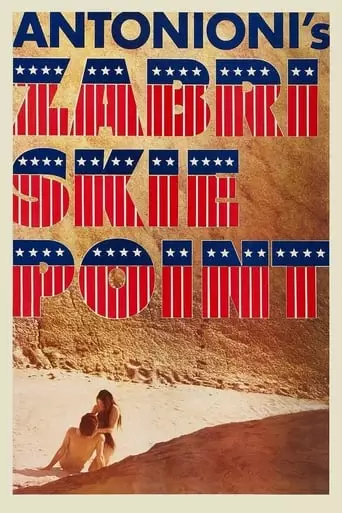
Zabriskie Point (1970) Watch Online Free
Anthropology student Daria, who’s helping a property developer build a village in the Los Angeles desert, and dropout Mark, who’s wanted by the authorities for allegedly killing a policeman during a student riot, accidentally encounter each other in Death Valley and soon begin an unrestrained romance.
Zabriskie Point is a 1970 film directed by Michelangelo Antonioni, known for its experimental style and exploration of the counterculture movement of the 1960s. The movie focuses on two main characters: Mark (played by Mark Frechette), a young radical student involved in protests, and Daria (Daria Halprin), a secretary working for a real estate mogul, Lee (Rod Taylor). Their paths cross after Mark becomes involved in a violent altercation with the police, which leads him to steal an airplane. Daria, on the other hand, is embroiled in a business deal that involves a desert development project.
The film is set in the stark, surreal landscapes of Death Valley and explores the tensions between the youth counterculture and the established corporate powers. As Mark and Daria meet in the desert, they engage in a passionate love affair, a symbolic act of rebellion against societal norms. The film culminates in a controversial and visually striking sequence, where a dreamlike montage of destruction captures the characters’ disillusionment with both the American capitalist system and their own roles within it.
The film’s themes are deeply rooted in the socio-political context of the 1960s. Antonioni explores the clash between individual freedom and corporate or governmental control, embodied by the characters’ experiences in the desert and their interactions with the world around them. The movie critiques consumerism, capitalism, and the disillusionment of the youth movement, highlighting a sense of alienation and dissatisfaction with modern life.
One of the most significant aspects of Zabriskie Point is its portrayal of the counterculture, which, at the time, was a movement of young people rejecting traditional societal values. Antonioni’s depiction of this movement, however, has been critiqued for its lack of a true understanding of the youth culture it attempts to represent. Critics, like Roger Ebert, have noted that Antonioni’s portrayal of the characters lacks depth, with the young people appearing disconnected from their environment and from each other.
The film also stands out for its visual style. Antonioni uses wide, sweeping shots of the desert landscape, creating a sense of isolation and emptiness. The cinematography, combined with the evocative music by Jerry Garcia and Pink Floyd, underscores the emotional and psychological states of the characters.
After watching Zabriskie Point, viewers are likely to feel a mixture of confusion, awe, and contemplation. The film’s abstract nature and its open-ended narrative invite multiple interpretations. Some may feel alienated, much like the characters, as Antonioni’s portrayal of the disillusioned youth can seem distant and unrelatable. The film’s dreamlike sequences, especially the final explosion, may evoke feelings of unease or a sense of catharsis, as the destruction of materialism and capitalism is depicted in a striking, almost surreal manner.
At the same time, the film’s visual beauty and its poignant exploration of personal freedom, rebellion, and societal critique can leave viewers with a sense of reflection. It’s a film that challenges conventional storytelling and asks the audience to consider the nature of their own desires and the societal systems they are part of.
In conclusion, Zabriskie Point is a film that offers more than just a narrative; it provides a meditation on the tensions of its time, which still resonate today. It’s a film that demands patience, introspection, and an appreciation for the abstract, leaving viewers with lingering thoughts long after the credits roll.
